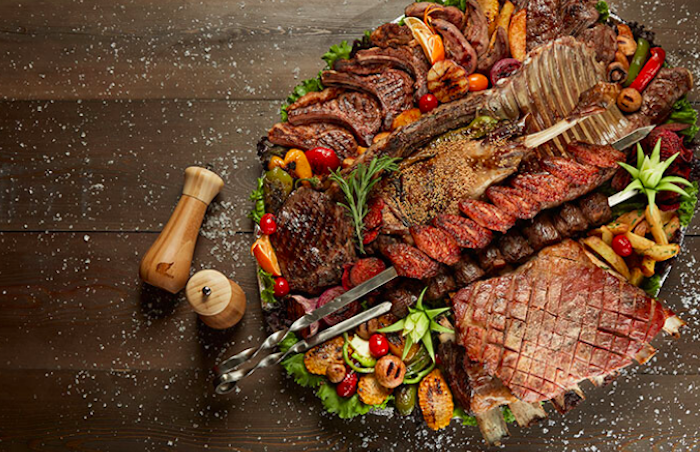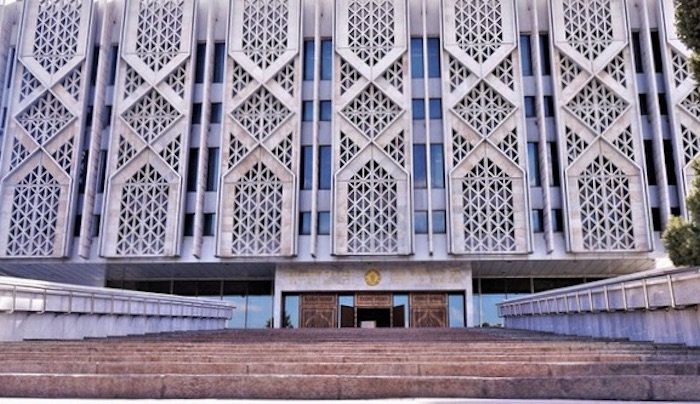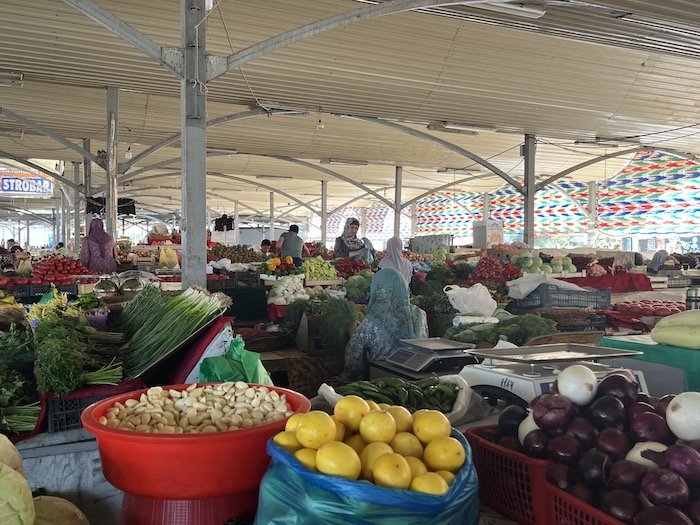I admit to a “let’s get this over with” attitude toward visiting Uzbekistan and Tajikistan. And I was secretly relieved we couldn’t get visas for Turkmenistan - that country, along with North Korea, is virtually impossible for most tourists to visit. And from what I’d read, it’s a very bazaar place. I haven’t lost my sense of adventure; I just wasn’t intrigued with the cultures of these three Central Asian countries.
In the case of Tajikistan, I was justified in my lack of enthusiasm (see the previous blog). We might never know if the strange, reclusive land of Turkmenistan was a missed opportunity. Still, I can tell you that we both fell in love with Uzbekistan. And our time in Tashkent, Samarkand, and Bukhara provided a lifetime of memories.
Of course, anytime you visit a country and have a local person waiting to host you, you have an excellent head start. In our case, we had two. In the blog “The Last of the Stans” I introduced you to Mikhail, the travel agent who deftly organized our tour of these three Uzbek cities. But we also connected with Ilhom Miliyer, an affable gentleman representing the Sister City program between our hometown of Seattle and Tashkent. He is a warm and welcoming human being who could not do enough for us.
Michael with Ilhom and the now defunct Seattle Cafe. I will share more about the relationship between Seattle and Tashkent in the next blog.
Under the guidance of these two new friends, we experienced Tashkent in a way we wouldn’t have been able to otherwise. It started with Mikhail’s choice of hotel for our first three days. Our flight from Paris was overnight so landing at a brand-new Hampton Inn with an early morning check-in was great. We grazed the delicious breakfast buffet and then fell into bed.
After our dreary Airbnb in Tajikistan this modest but modern hotel room at the Hampton Inn in Tashkent was just what we needed!
Mikhail met us in the afternoon with our itinerary, metro cards, and contact information. Then he whisked us off to a Kebab Pub on a riverbank for dinner. It was an excellent introduction to the meat-centric cuisine of this region. Sizzling skewers of beef, lamb, chicken, and (?) kept coming along with intriguing cheeses, salads, and addictive, tiny fried dumplings. The local beer was good, too. Being a committed carnivore, I was beginning to warm up to this place.
Mikhail was our guide for the following day, and he and the driver that collected us from the airport were at the hotel bright and early. If you come to Tashkent - do not consider for even one moment renting a car. And when you get in a taxi, fasten your seatbelt and spend time looking down at your phone so you aren’t terrified while getting from A to B. Traffic toggled between snarled and frantic! Our driver seemed unfazed. He dropped us near the entrance to every destination and magically appeared with bottles of cold water when we were ready to move on.
We started at the State Museum of History of Uzbekistan (formerly The Lenin Museum) to get an overview. The building itself is an excellent example of Soviet architecture. It was constructed in 1970 on the site of the original museum opened in 1870. That building collapsed during the devastating 1966 earthquake.
The exhibits start in the stone age and carry on through various historical periods. The introduction of Buddhism 2,500 years ago was unexpected, and the only functioning Buddist temples in Central Asia are in Uzbekistan. The Timurid period's exhibitions illustrated the flourishing of medieval science, poetry, architecture, and crafts. A recurring theme in our Uzbekistan travels was the lack of recognition for discoveries and inventions that came from Central Asia but were attributed to China or Europe.
From there, we moved on to the Madrasa Koukeldash - an ancient Mosque and religious school that dates back to 1598. The stunning tile, stonework, and intricate dome decoration were impressive. You can also visit a site that houses the world's oldest Quran (or at least a large part of it), dating back to 656. There is also an extensive collection of ancient and modern Qurans from around the world.
As we moved around this vibrant city, we were amazed at the apparently no-expense-spared new construction. There is a state-of-the-art performance hall and a sleek conference center. An uber-modern arena that looks like a UFO landed on the skyline, and several state-of-the-art hotels stretching skyward. There are still some ancient monuments and plenty of Soviet Monoliths, but most of the city was razed during the powerful earthquake I mentioned earlier. The necessary reconstruction allowed a new vision for Tashkent - and the Soviet leadership deserves credit for that, along with an overhaul of the education system and (almost) equal rights for women.
Ice in Uzbekistan! This building hosts hockey and other sporting events as well as concerts. At night it becomes a giant screen filled with videos of upcoming events and beautiful scenes from around the country. The entire city is lit at night, including elaborate panels of colored lights stretched across every major road in the city.
Many historic living quarters called mahallas collapsed during the earthquake. Sadly, a good number of the remaining neighborhoods will be demolished to make way for more new construction. However, there are over 300 still standing and many are protected under UNESCO. Mikhail took us to a vibrant community near the Madrasa Koukeldash where people still live their daily lives.
This is a typical Mahalla. The warren of streets mean living in tight quarters with your neighbors.
Doors are never locked, and anyone (even lost tourists supposedly) can knock and expect a cup of tea. And, of course, everyone knows everyone (and their business), so the entire neighborhood becomes involved if there is a wedding, a birth, a death (or even a breakup). Mikhail said as a teenager, you couldn’t get away with anything!
We visited a typical home where a retired Ikat fabric weaver lives. He is renowned for his skill in creating this intricate hand-dyed cloth indigenous to Uzbekistan. He is also 70+ years old and just married a twenty-something second wife! You can imagine the buzz that was sent through the neighborhood!
It was lunchtime, and apparently, we could not leave Tashkent without trying Plov - the national dish of Uzbekistan and a daily staple for the denizens of this capital city. It didn’t sound very appetizing, but it was a delicious tummy filler. And that is the goal. It is the main meal from mid to late morning, with service stopping promptly at 2:00 in the afternoon (or when the Plov runs out!) It is a working man’s meal. And I say man’s meal because most customers are male.
We dined at the most famous Plov restaurant - where the cooks began creating cauldrons of ingredients at 5:00 am (watch the process!). There were deep lines at the counter for takeaway and scores of people waiting for tables (there must have been a hundred of those on two levels.) The fresh pomegranate juice makers were doing a brisk business in the parking lot during the wait.
A serving of Plov is a conical pile of rice mixed with deeply roasted carrots and onions, warm spices, and a chunk of falling-off-the-bone lamb. Some versions include a few raisins and jammy soft-boiled quail eggs added as garnish. Slices of horse meat sausage are, thankfully, optional.
Fortified with lunch, we moved on to the famous Churso Bazaar. This famous dome-covered market, with its overflow of vendors and street food stalls, sprawls out in the middle of the city. Of course, it is a tourist attraction, but you’d better stay out of the way because it is also the daily marketplace for Tashkents. They will gently push you aside to gather their daily bread, fruit, and vegetables. And meat - lots of meat. They may also get their shoes repaired, top up their prayer cap supply, grab a snack of spicy marinated cabbage rolls and load up on sticky sweet cakes and candy. All while triple parked along the perimeter.
Mikhail hoped for one more stop, but we were done for the day. Happily back at our hotel, we enjoyed some not-bad Uzbek wine and a very light dinner. The next day, we had nothing booked except a concert and opera performance in the evening.
We spent most of the afternoon walking the tree-lined streets and admiring Soviet-era murals and more stunning buildings. Our end destination was a nail salon to get buffed and polished! Michael had a pedicure, I had a manicure and a gel pedicure, and the end results were perfect. We spent a total of $40 for all three treatments! From there, we moved on to $7 haircuts. We were looking good for our evening out.
I wish I had strappy little sandals to show off my toes, but this is about as dressy as we can get.
Mikhail had given us a heads-up about a concert we might like to attend. An evening of Italian Opera highlights performed with the Tashkent Symphony orchestra was a nice cultural respite. The event was held in the new Palace of International Forums - not typically used for musical performances, so it was a unique opportunity to see inside. The local attendees were just as awed by the elegant building, including giant Swavarski crystal chandeliers, as we were! The line to take selfies on the winding staircase was deep.
The music and singing were world-class, and observing members of the audience approaching the stage and placing flowers for the conductor and artists randomly during the concert was fascinating. But the most memorable part of the evening was meeting the couple sitting next to us. They left Moscow about a month ago with their 12 and 14-year-old sons. They were still a bit traumatized by the sudden decision to leave their home (and parents) behind, but they felt they had to leave Russia. They are not sure if they will ever return. They were the first of many couples and young men fleeing Russia that we would meet along the way.
After three days in Tashkent, we flew to Dushanbe, the capital of Tajikistan. Four days later, we happily returned to continue exploring Tashkent. In the next blog, I will pick up where I left off, share the history of the Seattle-Tashkent sister-city relationship, spend time with a family of ceramic artists, and take you on a visit to an elderly doctor that included X-rays and an admonishment for neglecting Michael's broken toes!
Thanks for following along,
Debbie and Michael Campbell
The Senior Nomads


















